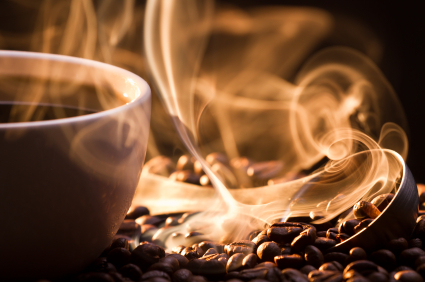With all the attention on coffee this week, I thought I’d re-spill the beans with a note of caution: not every cuppa is created equal. It seems fairly intuitive, doesn’t it? Afterall, the gut wrenching motor oil that you pick up at McDonalds is hardly equal to the made to order brew that is sold at one of my local favourites – Peregrine Espresso.
Recently, I ran across an editorial in the online edition of Maturitas that provides a deeper dive into coffee and what we, as consumers, are actually drinking every time we purchase a cup in a coffee shop. And the data may astonish you because while the serving sizes of espresso are within similar ranges, the caffeine content varies as much as two to almost six-fold. And let’s face it; most of us drink coffee for the taste. And for the caffeine effects.
However, as the authors point out, when it comes to commercially purchased coffee, it’s almost impossible to determine how much caffeine one is actually ingesting. This makes it difficult to stay within guidelines outlined by the International Food Council that suggest that moderate intake of caffeine equates to roughly three 8 oz cups a day, or 300 mg per day. (FYI: on average, it takes 5 hours for most adults to metabolize and excrete about half the caffeine consumed — in scientific circles, this is called “half-life”). And while this may seem unimportant to most, too much caffeine not only promotes insomnia or feeling jittery, but in amounts over the moderate intake level, may be downright dangerous for pregnant women (whose fetus can’t metabolize the purine akaloid in coffee). On the flip side? Regular coffee intake can help control gycemic levels (so long as you don’t add sugar), reduce the risk of depression and reduce cognitive decline, especially in women.
So, what do you need to know before you buy that next cuppa?
- Different coffee shops used differing amounts of coffee to prepare their coffee drinks.
- Barista methods vary from shop to shop and factors like water temperature, steam, time brewed, etc, all play a role.
- If you are a latte or cappuccino lover, your espresso is diluted but to what extent is a mystery.
- Beans are harvested, roasted and ground differently from one cup to the next.
The authors say to have no fear but to insist on “good quality, 100% arrabica beans,” and to start paying attention to the process. I think that this advice is a bit far fetched because short of being one of ‘those’ customers, I don’t see how one can control or demand. Starbucks is Starbucks, right? BTW, while the analysis was conducted in Scotland, Starbucks espresson had the lowest level of caffeine per serving — only 51 mg, which begs the question, what are you paying for when you drop $5 on the double espresso?
So, “what’s in your cup?” It’s fairly intuitive that a few visits to the same coffee shop will yield a lot of non-scientific answers; if two espressos cause a whole lotta jitters, have one the next time. That aside, I suggest a home brew to take all questions off the table and help insure that you are getting all of the benefits that you can out of every cup.







